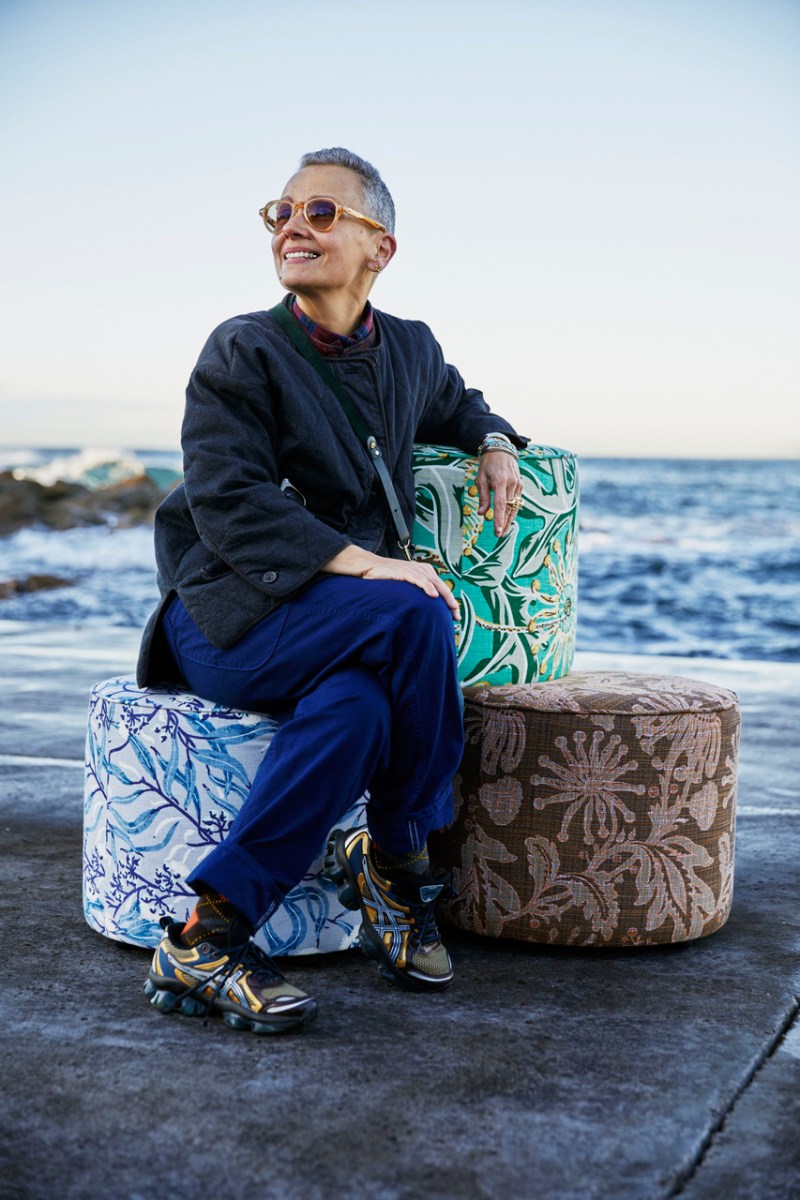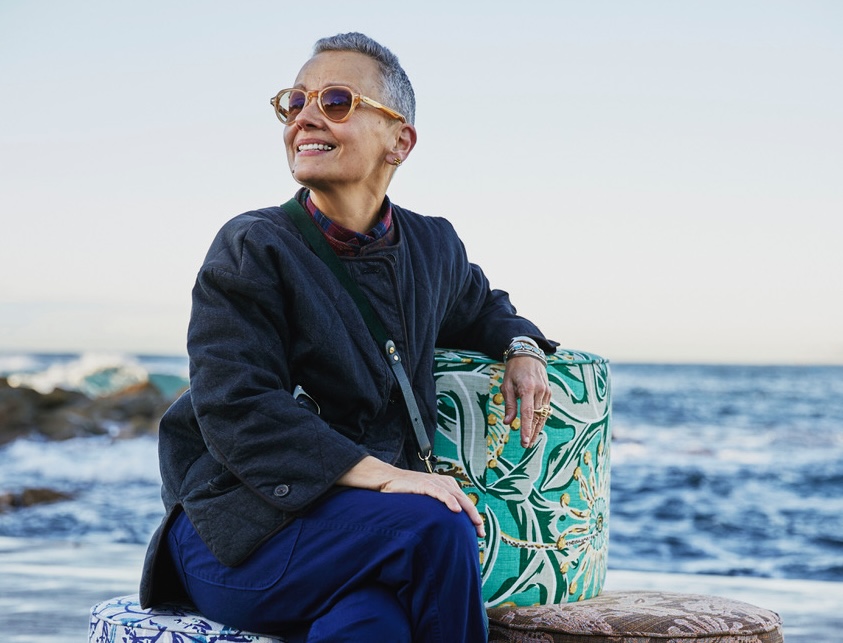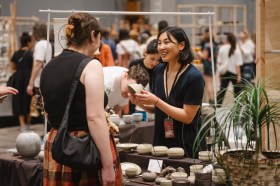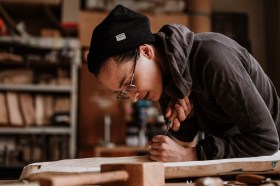Sophie Tatlow is a textile designer, but as Director of Utopia Goods, she extends what textile design can be, and is taking Australian narratives international. For more than two decades she has collaborated with Bruce Slorach in the multidisciplinary studio Deuce Design – under which Utopia Goods has been celebrating textile design for 12 years.
ArtsHub caught up with Tatlow to learn how she got her start, and what is shaping the textile design sector today.
In this story:
How would you describe what you do to a non-arts friend?
Tatlow: A material magician (Not quite). I’m a creator, designer, exporter, and storyteller through textiles and wallpapers. Everything we do is thematically Australian yet universally botanical. We’re here to attract attention to ‘craft’ and beautiful botanicals.
What qualifications do you need to be a textile designer?
A degree in curiosity and flexibility, with a healthy dose of optimism and mind-reading skills. Officially, I studied design and have a master’s, but the real qualifications come from navigating production across India and the US.
Our fabrics are dried outdoors, so even the weather dictates our timelines. We’re quick to adapt. You also need a deep appreciation of colour, texture and the ability to see beyond ‘trends’ and forecast ‘something both unique and classic’.
How did you get your start in textile design?
Before Utopia Goods, I ran (with Bruce) a commercial design agency for 25 years, working across branding, digital, heritage interpretation, and large-scale wayfinding plus many other design disciplines. Needing a change, I saw a gap. There didn’t appear to be a decorative arts textile brand that celebrated the Australian landscape without leaning on cultural clichés. The rest is history…
Read: So you want my arts job: Museum Curator
How collaborative is textile design?
Very. I work alongside my long-term partner in life and business. We create the collections together, though he illustrates the designs. It’s a partnership as two brains are better than one.
What is the most challenging aspect of being a textile designer?
Coordination. We’re a tiny team, yet we must perform like a much larger company. Production spans India and the US, and juggling printing, weaving, and deadlines keeps us agile. It’s a real juggling act.

As a textile designer, what’s an average week like?
Busy, varied, and rarely predictable. Design, production, marketing, sales, finance meetings, management…
What’s the most common misconception about designing textiles?
That it’s fun and easy, and we’re just “pushin’ cushion.” We design and produce everything from fabrics and wallpapers to hand-knotted rugs, custom furniture, and even large-scale commissions for clients like Cartier and Government House. Every week is really different and you really need to know how something is made across various mediums. Our work stretches from Sydney to India, Belgium, and the US.
How competitive is it to become a textile designer?
The design world is never dull and we’re up against the finest fabric brands in the world every day. Quality is paramount.
In a job interview, what skills or qualities do you look for?
Curiosity, initiative, flexibility, and a love of detail. You need to be both creative and practical.
What’s changing in your professional area of textile design?
Half of our sales are in the US, and the new tariffs have made things more complex and expensive. More concerning is the decline of traditional craft and hand-printing and weaving are becoming endangered skills. We’re committed to championing these processes, even as they become harder to produce.
What’s the weirdest thing that’s happened to you in this job?
Not so much weird as surprising. The joy comes from who you meet along the way. We have some amazing clients with really great requests! And travelling and working in India is one of life’s greatest adventures.
What about gender balance and diversity in your industry?
Design and textiles have always been rich with diverse voices, but there’s still plenty of room for more balance and representation.
Discover more arts, games and screen reviews on ArtsHub and ScreenHub.





